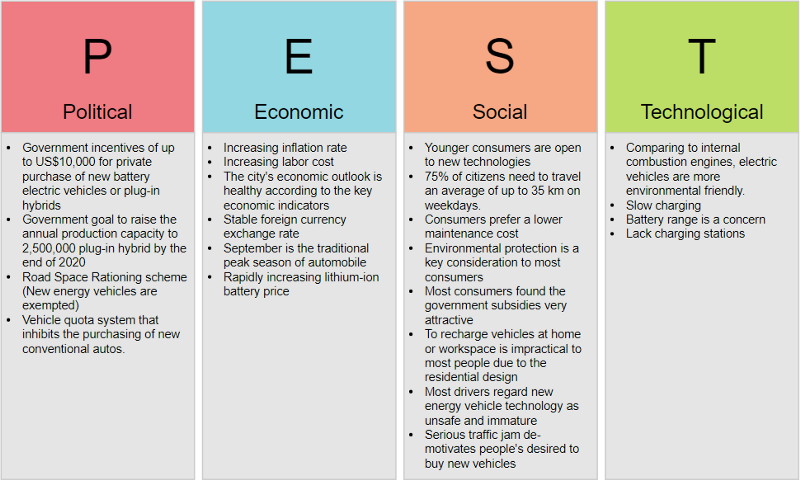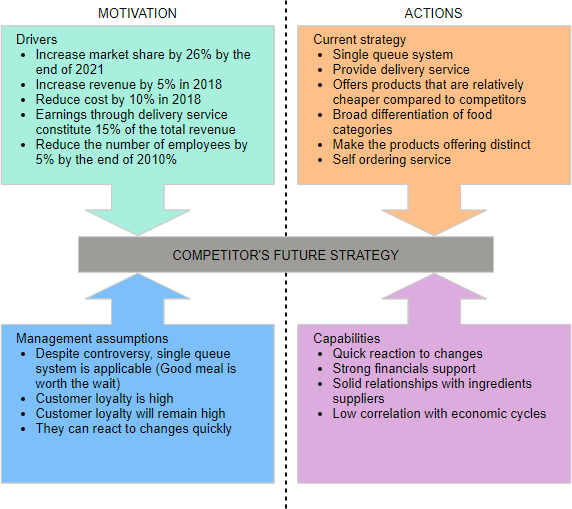Analiza strategiczna jest kluczowym etapem w Cyklu Uczenia się Strategicznego. Każdy strateg powinien mieć zestaw narzędzi modeli analitycznych do swojej dyspozycji. Jednakże istnieje wiele technik i narzędzi dostępnych do analizy strategii. Jeśli poszukasz w internecie, znajdziesz długą listę dostępnych opcji. Wyzwanie polega na pozyskaniu odpowiednich technik i narzędzi dla danego problemu biznesowego. Ten artykuł daje krótkie wprowadzenie, abyś mógł rozpocząć proces uczenia się analizy strategicznej.
Co to jest analiza strategiczna?
Najpierw, co to jest analiza strategiczna? Analiza strategiczna pomaga ci eksplorować możliwości wzrostu, rozwiązywać wyzwania w Twoim sektorze i podejmować lepsze decyzje korporacyjne. Analiza strategii to podejście do ułatwiania, badania, analizy i mapowania zdolności organizacji do osiągnięcia przyszłego wymarzonego stanu na podstawie obecnej rzeczywistości, często z uwzględnieniem procesów organizacji, technologii, rozwoju biznesu i możliwości ludzi.

Musisz spojrzeć poza swoją organizację, aby zidentyfikować zmiany na zewnątrz i spojrzeć w przyszłość, aby pomyśleć o możliwościach. Analiza strategiczna nie dotyczy tylko zrozumienia zmian. Chodzi o to, aby przekształcić to w konkretne działania poprzez generowanie opcji i wyborów, podejmowanie decyzji i integrowanie tego z procesem planowania w Twojej organizacji.
Wybrane narzędzia do analizy strategicznej
Tak jak posiadanie odpowiednich narzędzi nie czyni cię automatycznie dobrym mechanikiem, tak i posiadanie odpowiednich narzędzi do analizy strategii nie czyni cię automatycznie dobrym strategiem — ale pomogą ci wykonywać zadania bardziej efektywnie. Oto lista niezbędnych narzędzi do analizy strategii:
Analiza SWOT
Analiza SWOT to technika opracowana na Stanfordzie w latach 70., często stosowana w planowaniu strategicznym. SWOT jest akronimem od słów Siła, Słabości, Okazje i Zagrożenia i jest strukturalną metodą planowania, która ocenia te cztery elementy organizacji, projektu lub przedsięwzięcia biznesowego. Analiza SWOT to prosta, ale potężna ramka do wykorzystania mocnych stron organizacji, poprawy słabości, minimalizacji zagrożeń i wykorzystania największych możliwości.

(Otwórz i edytuj powyższy przykład analizy SWOT natychmiast)
Analiza SWOT to proces, w którym zespół zarządzający identyfikuje wewnętrzne i zewnętrzne czynniki, które wpłyną na przyszłą wydajność firmy. Pomaga nam zidentyfikować, co dzieje się wewnątrz i na zewnątrz, abyś mógł planować i zarządzać swoim biznesem w najbardziej efektywny i wydajny sposób.
Analiza PEST
Analiza PEST jest przydatnym narzędziem do zrozumienia wzrostu lub spadku rynku, a tym samym pozycji, potencjału i kierunku dla firmy. PEST jest akronimem od słów Polityczne, Ekonomiczne, Społeczne i Technologiczne czynniki, które służą do oceny rynku dla firmy lub jednostki organizacyjnej. Czasami jest rozszerzana o czynniki prawne i ekologiczne i nazywana analizą PESTLE.

Otwórz i edytuj powyższy przykład analizy PEST natychmiast
Analiza PEST pomaga nam zidentyfikować skuteczne strategie ustalania priorytetów, alokacji zasobów, planowania czasu i mapy rozwoju oraz formułowania mechanizmów kontroli. Dzięki tej analizie możesz zidentyfikować potencjalne okazje i zagrożenia związane z Twoją strategią i znaleźć sposoby na wykorzystanie ich i uniknięcie ich.
Analiza łańcucha wartości
Analiza łańcucha wartości to sposób wizualnej analizy działań biznesowych firmy, aby zobaczyć, jak firma może stworzyć przewagę konkurencyjną. Analiza łańcucha wartości pomaga firmie zrozumieć, jak dodaje wartość i następnie jak może sprzedawać swój produkt lub usługę za więcej niż koszt dodania wartości, generując tym samym marżę zysku. Innymi słowy, jeśli są prowadzone wydajnie, wartość uzyskana powinna przewyższać koszty ich prowadzenia, tj. klienci powinni wracać do organizacji i dokonywać transakcji swobodnie i chętnie.
Stworzona w latach 80. przez Michaela Portera, analiza łańcucha wartości jest pojęciowym ujęciem wartości dodanej w formie łańcucha wartości. Sugerował, że organizacja jest podzielona na „działania podstawowe” i „działania wspierające”. Poniższy rysunek dzieli działania na podstawowe i wspierające, zgodnie z sugestią modelu analizy łańcucha wartości Portera.

Otwórz i edytuj powyższy przykład analizy łańcucha wartości natychmiast
Analiza pięciu sił
Michael Porter opracował Model Pięciu Sił w 1980 roku. Pięć sił Portera to potężne narzędzie analizy konkurencyjnej, które służy do określenia głównych wpływów konkurencyjnych na rynku. Jest to szeroko stosowany model w biznesie, który odnosi się do pięciu ważnych czynników wpływających na konkurencyjną pozycję firmy w danym sektorze. Myśląc o tym, jak każda siła na ciebie wpływa i identyfikując siłę oraz kierunek każdej siły, możesz szybko ocenić siłę pozycji i możliwość osiągnięcia trwałego zysku w branży. Analiza pięciu sił pomaga więc pozostać konkurencyjnym poprzez:
- Znając siłę tych pięciu sił, możesz opracować strategie, które pomogą Twoim przedsiębiorstwom stać się bardziej konkurencyjnymi i zyskownymi.
- Patrząc na okazje, możesz wzmocnić pozycję swojej organizacji w stosunku do innych graczy, aby zmniejszyć nacisk konkurencyjny oraz wygenerować przewagę konkurencyjną.

Otwórz i edytuj powyższy przykład Pięciu Sił natychmiast
Analiza czterech kątów
Analiza czterech kątów, opracowana przez Michaela Portera, jest modelem, który doskonale nadaje się do pomocy strategom firm w ocenie intencji i celów konkurentów oraz mocnych stron, które wykorzystują do ich osiągnięcia. Jest to przydatna technika do oceny konkurentów i generowania wniosków dotyczących prawdopodobnych zmian strategii konkurentów oraz określania reakcji konkurentów na zmiany środowiskowe i przesunięcia w branży. Badając obecną strategię konkurenta, przyszłe cele, założenia dotyczące rynku i kluczowe możliwości, Model czterech kątów pomaga analitykom odpowiedzieć na cztery kluczowe pytania:
- Motywacja — Co napędza konkurenta? Szukaj motywatorów na różnych poziomach i wymiarach, aby uzyskać wgląd w przyszłe cele.
- Obecna strategia — Co robi konkurent i na co jest zdolny?
- Możliwości — Jakie są mocne i słabe strony konkurenta?
- Założenia zarządu — Jakie założenia robi zespół zarządzający konkurenta?

Otwórz i edytuj powyższy przykład analizy czterech kątów natychmiast
Analiza strategii przy użyciu projektowania map procesów
Visual Paradigm Online oferuje konfigurowalnego projektanta map procesów dla firm do tworzenia własnych map procesów dla szerokiej gamy dziedzin, takich jak analiza strategii, analiza konkurencji, mapa procesów, macierz porównawcza, proces sprzedaży itp. Jest ponad pięćdziesiąt takich przykładów i szablonów tutaj.
Tutaj uwzględniłem przykład analizy konkurencji i analizy przyczyn głównych w tym zestawie narzędzi do analizy strategicznej przy użyciu Projektanta Map Procesów.
Baw się dobrze i projektuj własne procesy dla swojej firmy!
Analiza konkurencji
Poznanie mocnych i słabych stron konkurentów może być kluczowe dla sukcesu Twojej firmy. Narzędzie do analizy konkurencji VP Online oferuje potężną mapę analizy konkurencji, która pozwala ci porównać swoją markę z konkurentami, dając ci szybkie i cenne wglądy w identyfikowanie najlepszych strategii marketingowych. Mapę analizy konkurencji można dostosować do wszelkich potrzeb. Ponadto możesz edytować i uzyskiwać dostęp do analizy w dowolnym miejscu, ponieważ VP Online jest oprogramowaniem do analizy konkurencji online, które działa na dowolnym urządzeniu, w dowolnej przeglądarce.
Poniżej wymienione są dostępne narzędzia do analizy konkurencji. Kliknij obrazek, aby szybko zobaczyć, lub kliknij przycisk Edytuj, aby edytować online. Nie wymaga się wcześniejszej rejestracji. Więcej przykładów analizy konkurencji dostępnych jest w oprogramowaniu do analizy konkurencji.

Otwórz i edytuj powyższą analizę konkurencji natychmiast
Analiza przyczyn głównych
Poznanie przyczyn leżących u podstaw incydentów i problemów może zapobiec powtarzającym się problemom, oszczędzając znaczne koszty operacyjne. Podczas gdy tradycyjne techniki analizy przyczyn głównych są czasochłonne, kosztowne i podatne na błędy, VP Online oferuje różne narzędzia do analizy przyczyn głównych, które przyspieszają analizę problemów i zapobieganie im. Ponadto możesz uzyskać dostęp do narzędzia w dowolnym miejscu, ponieważ VP Online jest oprogramowaniem do analizy przyczyn głównych online, które działa na dowolnym urządzeniu, w dowolnej przeglądarce.
VP Online oferuje wiele konfigurowalnych narzędzi do analizy przyczyn głównych, które wspierają różne potrzeby domenowe i rozwiązywania problemów. Kliknij obrazy poniżej, aby zobaczyć przykłady, lub kliknij Edytuj, aby spróbować. Nie wymaga się wcześniejszej rejestracji! Więcej przykładów analizy przyczyn głównych dostępnych jest w narzędziu do analizy przyczyn głównych.

Otwórz i edytuj powyższy przykład analizy przyczyn głównych natychmiast
Ten post dostępny jest również w Deutsch, English, Español, فارسی, Français, Bahasa Indonesia, 日本語, Portuguese, Ру́сский, Việt Nam, 简体中文 and 繁體中文













